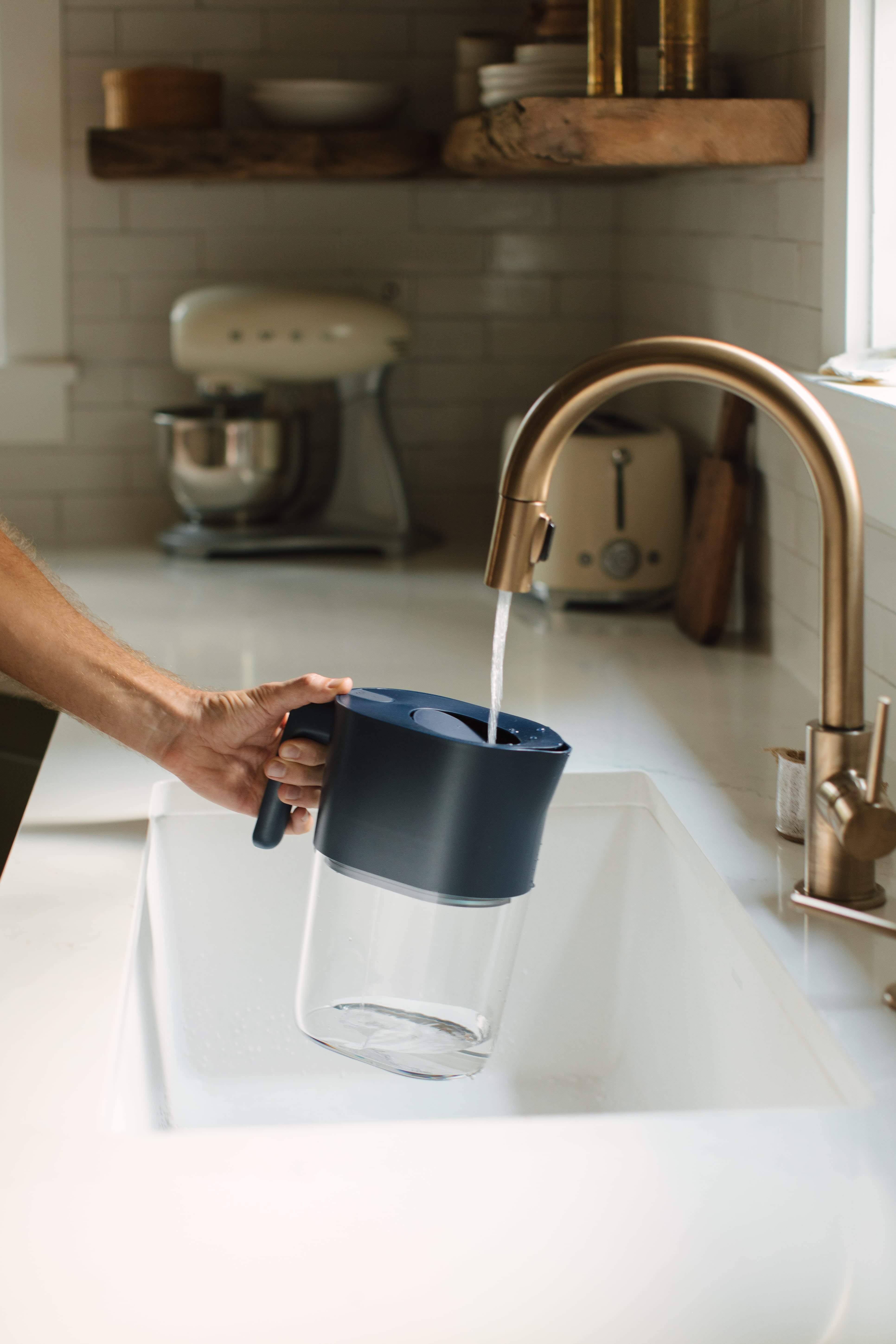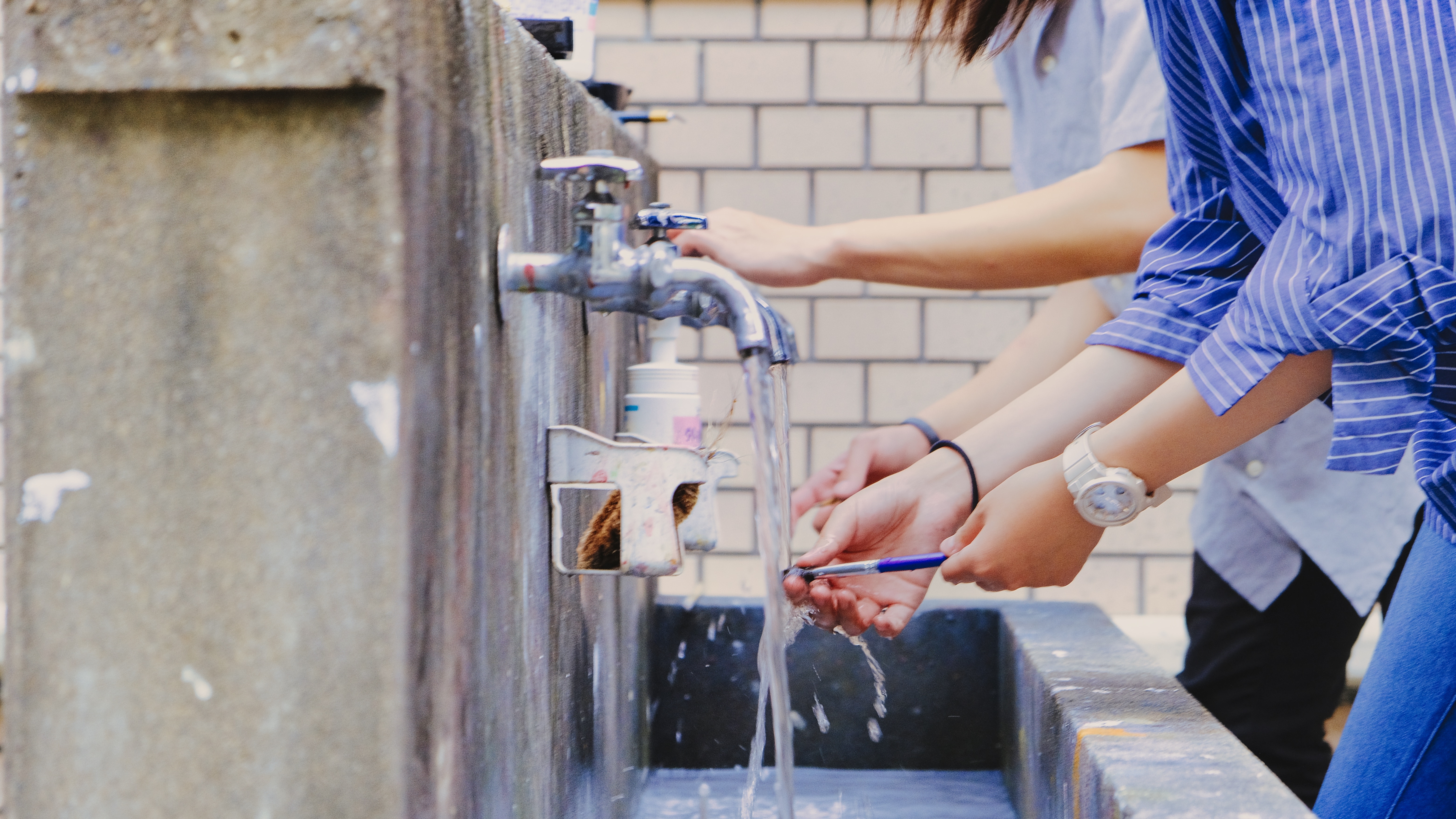When you think “chlorine,” you probably think of that sharp, unpleasant odor that comes off of swimming pools. But chlorine is more than just a pool-cleaning agent: it’s also an integral part of our water distribution system.
Chlorine disinfection is one of the most popular methods for cleaning water — but why is chlorine added to our water to begin with? And are there any risks that come with drinking it? In this blog, we’ll tell you everything you need to know about chlorine water treatment, including potential health effects and controversies, plus explain why you need a self-cleaning water filtration system like the LARQ Pitcher PureVis if you want to ensure that your home water is safe, fresh, and germ-free at every stage.
Why we use chlorine in drinking water
Safe drinking water is a necessity. Unfortunately, there are many different kinds of bacteria that can contaminate water systems and get people sick, including E. coli, salmonella, and Vibrio cholerae (to name a few).
As a result, disinfecting the water supply and eliminating those harmful germs is one of the most important steps in creating a safe public water supply. To do this, many water treatment facilities use chlorine.
Chlorine is a chemical that is used in water systems throughout the world to kill bacteria and other potentially dangerous microbes that can carry waterborne diseases and illnesses. Chlorine is highly effective at keeping our water safe from these pathogens, and its use has even been attributed to virtually eliminating waterborne diseases like cholera and typhoid fever in our country.
As a result, over 98% of water treatment systems in the United States use chlorine to disinfect their tap water. It’s also used to treat other kinds of water; most notably, chlorine is used to disinfect both indoor and outdoor swimming pools.
Potential health risks and controversies
Unfortunately, even though chlorine is often a necessity for maintaining water quality, some research indicates that the use of chlorine may also be linked to some health effects.
For example, high levels of chlorine exposure have sometimes been linked to lung irritation and subsequent respiration issues. “Chlorine cough” is a common symptom in recreational swimmers, since they are exposed to chlorine that is used to disinfect swimming pools.
The good news here: the levels of chlorine in tap water are much less concentrated than those used to clean swimming pools, which means that the amounts of chlorine in your drinking water shouldn’t be dangerous. According to the Centers for Disease Control and Prevention, it’s generally safe to drink water that contains levels of chlorine up to 4 mg/L.
More serious, however, are the potential risks of byproducts associated with the chlorination of drinking water. When chlorine is introduced into the water system, it can interact with natural organic matter like decaying plant and animal materials. This can then cause a chemical reaction and create new kinds of compounds that we collectively call disinfection byproducts. Unfortunately, some research suggests that prolonged exposure to certain disinfection byproducts created by chlorine may be linked to potential long-term health effects.
Two common byproducts that can be created by chlorine include trihalomethanes (TTHMs) and haloacetic acids (HAAs).
- Trihalomethanes (TTHMs) are thought to be potentially carcinogenic. In particular, long-term trihalomethane exposure is often linked to an increased risk of bladder cancer.
- Haloacetic acids (HAAs) are also thought to be carcinogenic, with some studies linking them to bladder and liver cancers. In addition, HAAs some studies have also linked HAAs to reproductive and developmental effects.
Finally, while this isn’t necessarily a health risk, a big reason that people filter out chlorine in their drinking water is because of the unpleasantly sharp and bitter taste or smell. While your drinking water is still considered safe if it smells or tastes like chlorine, it can still be off-putting.
Filtering out chlorine (and why your standard water filter isn’t cutting it)
There’s no doubt that chlorine does an important job in keeping our water supply clean and safe from germs that carry waterborne illnesses. However, we also have to balance the benefits of chlorination with the potential health risks that it can present due to its dangerous byproducts.
If you don’t like the taste or smell of your chlorinated water, you can combat the issue by leaving treated water out for a while before drinking or using it. This allows the chlorine to evaporate. Unfortunately, this isn’t the best solution since simply leaving the chlorine to evaporate doesn’t eliminate other common contaminants often found in drinking water.
Therefore, your best bet for clean, safe water is to use a filtration system! However, when it comes to chlorine, your average water filter alone isn’t enough.
Here’s why: Yes, most standard water filters often filter out chlorine. Unfortunately, chlorine does do an important job in eliminating microbes that can cause waterborne illness. When chlorine is removed via filtration, this actually makes it easier for biological contaminants to grow inside of your water filter itself. In other words, your average water filter may inadvertently become the perfect breeding ground for those biological contaminants to grow in your water, and this can happen in as little as two weeks.

The solution: invest in a water filtration system that helps fight contaminants from start to finish! LARQ’s line of premium filtration water products like the Pitcher PureVis and the Bottle Filtered use advanced Nano Zero filter technology to get rid of common water contaminants including chlorine, lead , mercury, PFAS/PFOAs and copper.
Then, the real magic happens when you use your self-cleaning LARQ products to purify your water after filtration. Switch the top of your water bottle to the LARQ Bottle PureVis Cap, which uses innovative technology to eliminate up to 99% of bacteria from your water and your bottle. If you’re using the Pitcher PureVis, it purifies automatically in the background so you can rest assured that the water you use in your home is fresh and clean around the clock. By running your home water through this innovative system, you can rest assured that your drinking supply is safe at every stage.
